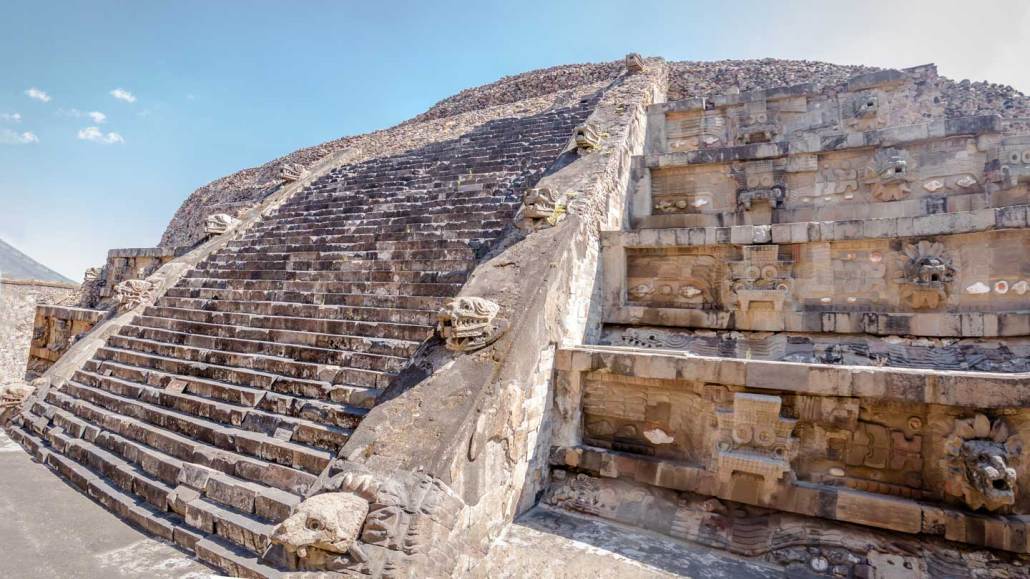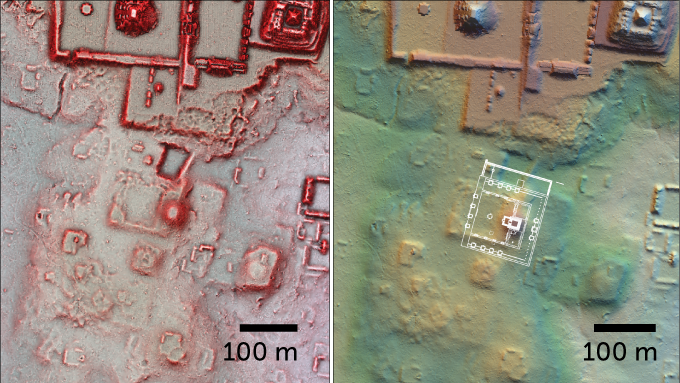Lasers reveal construction inspired by ancient Mexican pyramids in Maya ruins
Scaled-down cousin of Teotihuacan’s Temple of the Feathered Serpent found in Guatemala

The Temple of the Feathered Serpent (shown) is the smallest of the three giant pyramids at the ancient Mexican city of Teotihuacan.
diegograndi/iStock/Getty Images Plus
- More than 2 years ago
At Teotihuacan, near Mexico City, three giant pyramids rise above the ancient city’s main street, the Avenue of the Dead. The smallest of these is the Temple of the Feathered Serpent, which sits within La Ciudadela, or the Citadel, a massive sunken plaza with tall walls.
Now, more than a thousand kilometers away at the Maya capital of Tikal in what’s now Guatemala, researchers have found a smaller plaza and pyramid possibly modeled after La Ciudadela and its temple.
Teotihuacan is thought to have conquered Tikal in the year 378 (SN: 9/27/18). The finding adds to evidence of Teotihuacan’s influence over Tikal, the team reports September 28 in Antiquity.
“The architectural layout revealed by this study is stunning,” says anthropological archaeologist Nawa Sugiyama of the University of California, Riverside, who was not involved in the new research. “The very orthogonal city planning with specific orientation of the pyramids gives Teotihuacan a very characteristic architectural style, making it easy to identify any Teotihuacan influence abroad.”
What’s more, the newfound structures had six construction phases, the researchers say, most dating to a time in Mesoamerica that archaeologists call the Early Classic period, which lasted from about 300 to 550. That means that the Tikal complex possibly predates the Teotihuacan conquest of the Maya city in 378. If true, that would add more evidence to an idea that scientists have worked on for decades — that these civilizations were in contact much earlier than the conquest of Tikal, possibly trading and making political connections with one another.
To uncover the pre-Columbian architecture, archaeologist Stephen Houston of Brown University in Providence, R.I., and colleagues at the Proyecto Arqueológico del Sur de Tikal along with the Pacunam LiDAR Initiative and the University of Texas at Austin used an airborne remote-sensing technique called lidar, or light detection and ranging.

“We knew this area in Guatemala was important to Teotihuacan culture,” says study coauthor David Stuart, director of the Mesoamerica Center of the University of Texas at Austin. But the place where the Citadel-inspired construction is located did not appear on old maps of the Tikal archaeological site because it is covered in vegetation. “As there was no visible stonework there, it was thought to be a natural hill,” Stuart says.
The team decided to look closer because the mound looked unusual for a Maya site. “Since the location was adjacent to an area in Tikal where many Teotihuacan-style artifacts were found in the 1980s, we thought it deserved more attention,” Stuart says. After reviewing the lidar mapping, Houston saw that the general plan of the buildings resembled the Ciudadela and its temple at Teotihuacan.
In her 2004 book The Ancient Maya: New Perspectives, Louisiana State University archaeologist Heather McKillop noted that the abundant presence of Teotihuacan-style architecture and pottery found in Tikal and a number of Maya sites across Guatemala is extensive evidence of the Teotihuacan influence across Mesoamerica from the year 400 to 700. The ancient city in Mexico thrived from about 100 to 750, but much about the people who lived there and why the city was destroyed and abandoned is still a mystery. The Aztecs gave the name Teotihuacanto the city centuries after its collapse.
“It is almost like Teotihuacan had installed their own neighborhood or embassy in Tikal,” says study coauthor and archaeologist Thomas Garrison, also at the University of Texas at Austin. Other research led by Sugiyama shows that “there was also a more permanent Maya presence in Teotihuacan before the conquest of Tikal as well, so influence probably went in both ways.”
Sugiyama studies the Plaza of the Columns Complex at Teotihuacan, where researchers have found Maya ceramics and evidence of Maya-style painted walls. “These murals were destroyed … before the 378 arrival event,” she says. “That makes us wonder whether the conquest [of Tikal] was one of the last chapters” in a long history of contact between the Mayas and the Teotihuacanos.
Eduardo Natalino dos Santos, a Mesoamerica historian at the University of São Paulo who did not take part in the study, agrees with Sugiyama. “The circulation of these ancient architectural styles show that the Mesoamerican Indigenous elites were connected. We used to see traces of one culture in a different region always as a result of a colonizing or domination process. Maybe this is not always the case,” he says.







